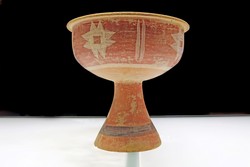Early pottery under the microscope
From China and Korea to Greece and Syria, many of the world’s museums are adorned with pottery vessels that give us insight into past civilisations and inspire us to imagine how these objects were used. Although pottery was used for cooking, storage and even decorative purposes, how and why pottery emerged some 12 000 years ago in east Asia had remained largely a mystery, until now. The EU-funded PONTE (Pottery innovation and transmission in east Asia: Bridging expertise across continents) project employed novel biochemical methods to identify the use of ceramic vessels and unveil their secrets. It effectively revealed how pottery spread and what its purpose was. To achieve its aims, the project team used cutting-edge organic residue analysis and combined it with east Asian prehistoric archaeology. Specifically, PONTE investigated the evolution of pottery, factoring in climatic and palaeoenvironmental conditions, and studying changes in style and shape of pots over time. It looked at whether the earliest pottery in Japan had reached other areas in east Asia, studying as well early pottery of China, Russia and South Korea. Techniques employed in examining pottery remains included stable carbon and nitrogen isotopic analysis and lipid residue analysis, yielding new and surprising findings. For example, the team found that early Jomon pottery in Japan was used to process seafood, showing more specialisation than previously assumed. It also tracked the earliest use of millet in Korea, contributing to knowledge on how the grain spread in the region. Further analysis showed differences in dietary practices between China and north-east Asia (mainly Japan and Korea). These and other findings, based on new scientific techniques, add a wealth of information on the use and spread of pottery in the region, which bears directly on how civilisation spread and evolved. The techniques could no doubt be used in other parts of the world to clarify historic trajectories and linkages.







